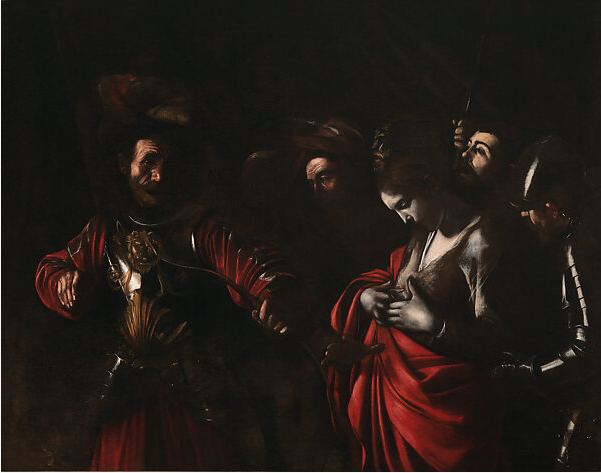The Last Caravaggio
The painting as a whole is but a cropped view, a three-quarters shot revealing an arrangement of characters forming a scene. They are close enough to each other for dialogue, which as a beholder commands our attention toward the posture of their bodies both as standalone figures and as a cohort. Real people and real emotions involved. Experience is always readily tangible in Caravaggio’s work. Very purposeful escalation; no overdirection. With Church Art as a story telling device, he portrays well known narratives not as an idealised version, but as pointed articulations of looking at sedition, subversion, power, influence, control or authority. He is a channeler in the noblest sense, and of course coupled with immense talent and judgement he always makes successful work. He is an intellectual painter, one who trusts the viewer to assess and decrypt the literal from the symbolic. Most artful at the ingenuity of asking the right questions, he is the epitome of rejecting that things are simply what they are at face value.
In ‘The Martyrdom of Saint Ursula’ we have Ursula, having refused to marry the king of the Huns. An arrow was just set out by the very hand of the king, which pierces Ursula’s heart. But I see on her face neither surprise nor terror but perhaps acknowledgement. Serene watcher to her own passing, one may say stoic, even looking a Renaissance Aphrodite wrapped in a bright, ample cloak. An allegorical figure. Around her, further youthful protagonists are displaying arrested feelings of commotion or disquiet. To the far left, the slayer’s face is looking craven, that of a bibulous commoner, a wrinkled and rather insipid man, not even decisive, as he exercises the prerogative he has the power to inflict.
In person, the extremely low-lit dark room does not help appreciate the work. The room is also too small. Tucked in a corner of the majestic art museum, this feels unfit.
Subject-matter is against religious literalism, actually, and one has to feel themselves in by way of intuition, a little bit. Caravaggio will lead you to forming your own interpretations if you let him, although it is fair to say that he is not a painter for the languid. This work is not among Carravaggio’s greatests for biographical reasons.

The Martyrdom of Saint Ursula,
1610,
Oil on canvas,
143 × 180 cm
(Intesa Sanpaolo Collection, Palazzo Zevallos Stigliano, Naples)